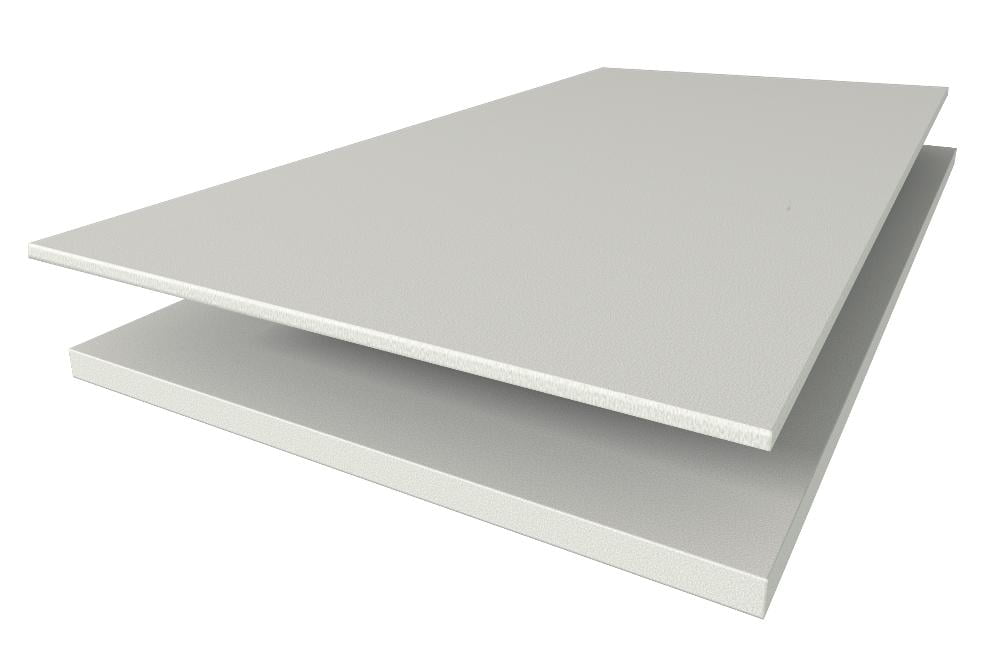Fiber cement board is one of the highly used durable and low maintenance construction material that is mostly used as partition walls, ceiling works and even exterior walls for some houses.
In both household and commercial applications, fiber cement board is a type of building material used to cover a building’s exterior. A composite material comprised of cement and cellulose fibers is known as fiber cement. The fiber cement board may come pre-painted or pre-stained or can be done so after installation. Asbestos was first used as the reinforcing ingredient, but because of safety concerns, that was changed to cellulose in the 1980s.
Although sheet sizes vary slightly from one manufacturer to the next, they typically fall between the 2400–3000 mm and 900–1200 mm ranges (600 & 450 mm increments). As residential floor, wall, and roof systems place structural components at 450 or 600 mm centers, this manufactured size saves on-site waste.
There are lengths for siding boards that range from 130mm to 300mm (5.25 inch to 12 inch). Densities of fiber cement also vary, with lesser densities having a fibrous rough edge when cut and higher densities having a cleaner, smoother edge. Fiber cement thicknesses range from 4.5 to 18 mm.
There are big differences in fiber cement products in terms of thermal resistance and sound transmission. Separate wall insulation is strongly advised because fiber cement sheet products perform badly in terms of sound transmission and thermal resistance. The product will typically have superior resistance to temperature and sound transfer if it is thicker and denser.
It has good waterproofing resistance that is manufactured with cement, sand and cellulose fibers making it strong and durable to withstand different season.
How to install of Fiber Cement Board
The uncut sheets of fiber cement cladding must be carried by two people since they are so heavy. Before installation, thin fiber cement cladding is delicate and needs to be handled with care since it might break or chip if handled incorrectly. After the product has been cut, installation may once more call for two persons; one person will hold the sheet flush against the studwork while the other nails the product in place.
Fiber cement sheeting being cut:
There are three ways to cut sheets to size.
With a strong cutting blade, thinner sheets can be scored and snapped.
using an electric or manual “fibro cutter” (Australian term)
To cut thicker and denser sheets, a mechanical saw with a diamond blade (masonry blade) is required.
When installing fiber cement sheets, end-joints (cladding seams) must have a gap of around 5 millimeters (0.2 in), which will later be filled with fiber cement siding caulk. To stop water from damaging the sheathing behind overlapping seams, metal 150 mm x 150 mm (6 in x 6 in) step flashing is necessary. The sheets are fastened using nails made of hot-dipped galvanized steel.
Because prolonged exposure to the silica dust created during the installation process might result in silicosis, it is important to take precautions to ensure that areas where fiber cement siding (FCS) is being cut are appropriately ventilated.
Before or after installation, fiber cement cladding can be painted or stained[2]. Once the product is fixed, the joints are often covered with wood battens, and the entire wall surface is painted.
The table below shows the latest retail September 2023 prices of Fiber Cement Board in Philippines Peso price per pcs including its sizes, brand and thickness.
Price and Standard Sizes for Fiber Cement Board per pc in the Philippines
| SIZE | THICKNESS | PRICE |
| FCB – Smart (4′ x 8′) | ||
| 3.50 mm | 385.00 | |
| 4.00 mm | 425.00 | |
| 4.50 mm | 465.00 | |
| 6.00 mm | 560.00 | |
| 8.00 mm | 780.00 | |
| 10.00 mm | 950.00 | |
| 12.00 mm | 1400.00 | |
| FCB – Shera (4′ x 8′) | ||
| 4.50 mm | 465.00 | |
| 6.00 mm | 590.00 | |
| FCB – Kalsi (4′ x 8′) | ||
| 3.50 mm | 385.00 | |
| 4.50 mm | 465.00 |
UPDATED: Construction Material Prices for Fiber Cement Board in the Philippines (September 2023)
UPDATED: All Construction Prices are based on retail prices around hardware in Metro Manila
To see other material construction, please see here.
To know other construction guides, tips, and methodology for beginners, veterans, and contractors, please see here.

